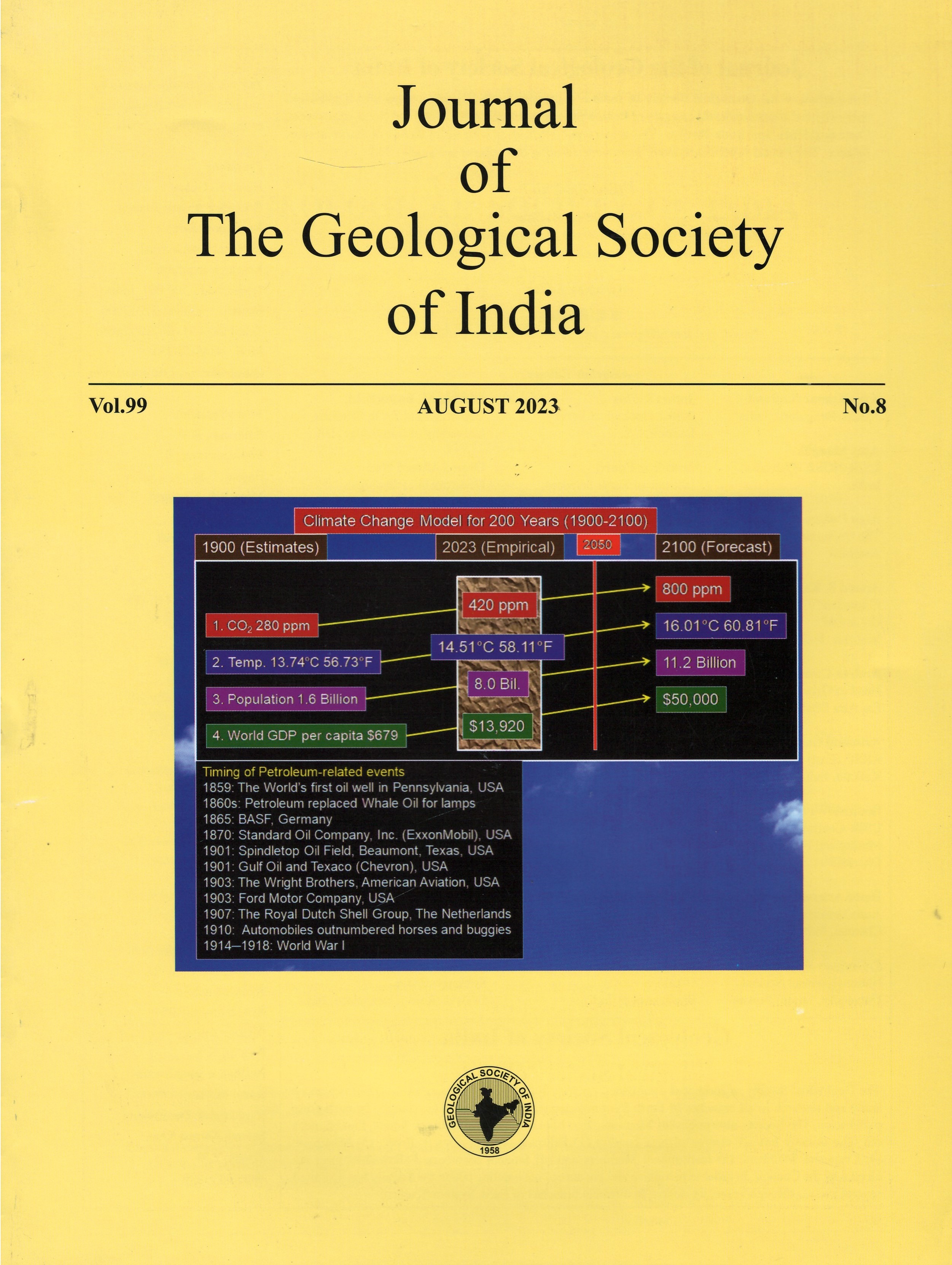Ascertaining Potential Causes of Hillslope Failure Associated to Human Settlement: A Case Study From Alaknanda Valley, Uttarakhand, NW Himalaya, India
DOI:
https://doi.org/10.1007/s12594-023-2443-5Keywords:
No KeywordsAbstract
Growing human population along the river valleys in hilly terrain particularly on the fluvial sediments poses increasing risk of terrace instability and subsequent failure. Such instability and failure result in frequent loss of settlement, agricultural lands, and often lives. Alaknanda River valley in Uttarakhand comprises many fluvial terrace slopes that accommodate human settlement and hence one such fluvial terrace slope was taken as a case study area. On Feb. 28, 2022, Saari (or Sari) village, situated on the fluvial sequence, witnessed a slope failure collapsing 3 houses but no casualties. The hillslope with a total disturbed area of ~3889±5.0 m2 and failed material volume of ~16858±4.3 m3 partially dammed a tributary of Alaknanda River, which passes through the toe of the failed slope. The present study is an attempt to understand the instability that led to such failure because there was no extreme rainfall or earthquake prior to this failure. Pre- and post-failure topography of slope was used to demarcate the detachment and deposition zones. Pre-failure topography was used to perform the Finite Element Method (FEM) based slope stability simulation. In order to evaluate the possible contribution of exposed rockmass in failure, kinematic analysis was also performed. Results revealed the development of displacement pattern, particularly due to anthropogenic loads that must have initiated this failure. Such studies are primary requisites for an effective disaster mitigation in the NW Himalaya where growing human population on fragile hillslopes are at risk.

 Vipin Kumar
Vipin Kumar






